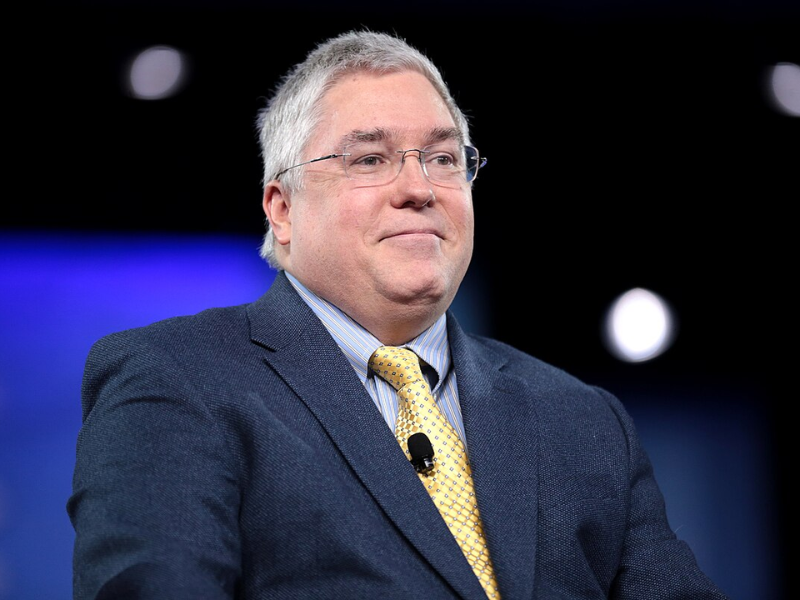
The strength and stability that the American political process long displayed was not only the product of the structure that the Founders designed. It was also a result of our two-party system, which, ironically, developed despite the Framers’ best efforts. Over decades, that system cohered into one with a center-left party and a center-right party, with a substantial overlap between the two. It was a far less fractured system than a European-style multiparty structure.
The more liberal tendencies of the Democratic Party were long tempered by more conservative members from small towns in the South, Midwest, and even mountain states. When I first came to Washington in 1972, many of the Senate delegations looked very different than they do today. Democrats held both Senate seats in Alabama, Arkansas, Indiana, Louisiana, Mississippi, Missouri, Montana, North Carolina, and West Virginia, which would be unthinkable today. In those days, Sen. Joe Manchin might not have felt quite so lonely at Tuesday caucus lunches.
In a similar way, the more extreme conservative tendencies of the Republican Party were moderated by liberal and centrist members, usually from cities and closer-in suburbs, the Northeast, the Great Lakes states, and the Pacific Coast. At that point, Maryland and Oregon were among the states with two Republicans. More importantly, Connecticut, Idaho, Massachusetts, North Dakota, Oklahoma, South Carolina, South Dakota, Texas, Utah, and Wyoming had split delegations, contributing to the ideological diversity in each conference.
Once the ideological sorting began in the 1980s and 1990s, liberals who had either been Republicans or independents started migrating to the Democratic Party. Likewise, conservatives who had identified as Democrats or as independents were drawn into the Republican Party. As for the true moderates? They began feeling isolated and marginalized, running for office less, working in campaigns less, giving less, and voting less frequently in primary elections.
Biologists often talk about the need for biodiversity. In politics, it’s healthy to have parties with internal diversity, not only along lines of gender and race but geographical and ideological diversity, as well. Just as inbreeding can distort certain characteristics in nature, in politics it has an effect too, creating a certain tone-deafness or an inability to see how anyone else might see an issue differently.
There has been a ton of public-opinion research documenting just how bitter the views of partisans are regarding those in the opposition. For example, the 2019 national survey by Public Religion Research Institute found that 80 percent of Democrats agreed with the statement, “The Republican Party has been taken over by racists.” Eighty-two percent of Republicans agreed with the statement, “The Democratic Party has been taken over by socialists.”
A bit more fun was the finding by UCLA political scientist Lynn Vavreck that 60 percent of Democrats and 63 percent of Republicans would not want their son or daughter to marry someone from the opposite party. It wasn’t that long ago that religion was the great divider. Now it is politics that drives the zealotry of many Americans.
In social science, the term “group polarization” describes the phenomenon in which, as like-minded people begin to discuss a subject, their views tend to become more extreme in that direction. The increasingly monolithic ideological nature of each of our two major parties, exacerbated by cable news, talk radio, the internet, and social media, has a way of building an intensity far greater than was commonly seen 30 or 40 years ago.
Long before he became president, Ronald Reagan, who had been a Democrat earlier in life, was fond of saying that he did not leave the Democratic Party, it left him. Many voters today can relate. From people from all over the country, those between the ideological 30-yard lines that are neither passionately liberal nor passionately conservative, I get asked all the time: “Who is supposed to represent us?” Given the structure of American politics today, the need for an Electoral College majority effectively precludes the possibility of an independent or third-party candidate capturing the White House.
Now we are in an era of ping-pong policy development, bouncing back and forth, from left to right and back to left, repeating endlessly.
The challenge is that so many integrally involved in the respective parties have lost all perspective and do not realize how ideological their party has become.
When people ask me that question, as happened just this past week in Chicago, my answer is that with ideological sorting, the nature of the two parties will not change until the moderates or centrists decide they want to take back their respective parties, pulling the GOP back to the center right and Democrats to the center left. Only then will we return to anything like the stability and normalcy that so many people want.
The article was originally published for the National Journal on March 28, 2022.











Subscribe Today
Our subscribers have first access to individual race pages for each House, Senate and Governors race, which will include race ratings (each race is rated on a seven-point scale) and a narrative analysis pertaining to that race.